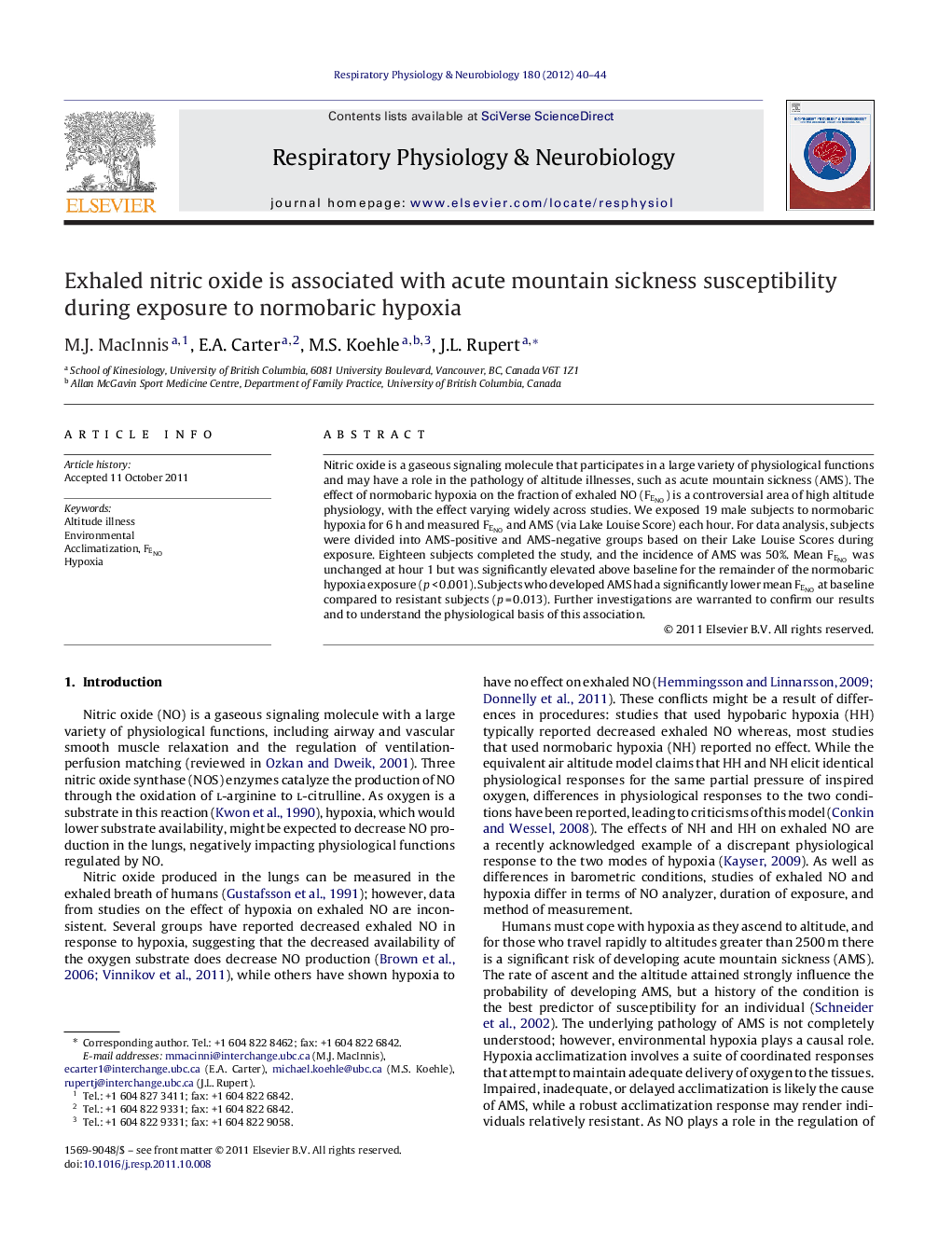| کد مقاله | کد نشریه | سال انتشار | مقاله انگلیسی | نسخه تمام متن |
|---|---|---|---|---|
| 2847395 | 1167360 | 2012 | 5 صفحه PDF | دانلود رایگان |

Nitric oxide is a gaseous signaling molecule that participates in a large variety of physiological functions and may have a role in the pathology of altitude illnesses, such as acute mountain sickness (AMS). The effect of normobaric hypoxia on the fraction of exhaled NO (FENOFENO) is a controversial area of high altitude physiology, with the effect varying widely across studies. We exposed 19 male subjects to normobaric hypoxia for 6 h and measured FENOFENO and AMS (via Lake Louise Score) each hour. For data analysis, subjects were divided into AMS-positive and AMS-negative groups based on their Lake Louise Scores during exposure. Eighteen subjects completed the study, and the incidence of AMS was 50%. Mean FENOFENO was unchanged at hour 1 but was significantly elevated above baseline for the remainder of the normobaric hypoxia exposure (p < 0.001). Subjects who developed AMS had a significantly lower mean FENOFENO at baseline compared to resistant subjects (p = 0.013). Further investigations are warranted to confirm our results and to understand the physiological basis of this association.
► The fraction of exhaled nitric oxide (FENOFENO) increased during 6 h of normobaric hypoxia exposure.
► Subjects who developed acute mountain sickness had lower FENOFENO at baseline compared to subjects who did not develop the condition.
► Innate nitric oxide production could contribute to acute mountain sickness susceptibility.
Journal: Respiratory Physiology & Neurobiology - Volume 180, Issue 1, 15 January 2012, Pages 40–44